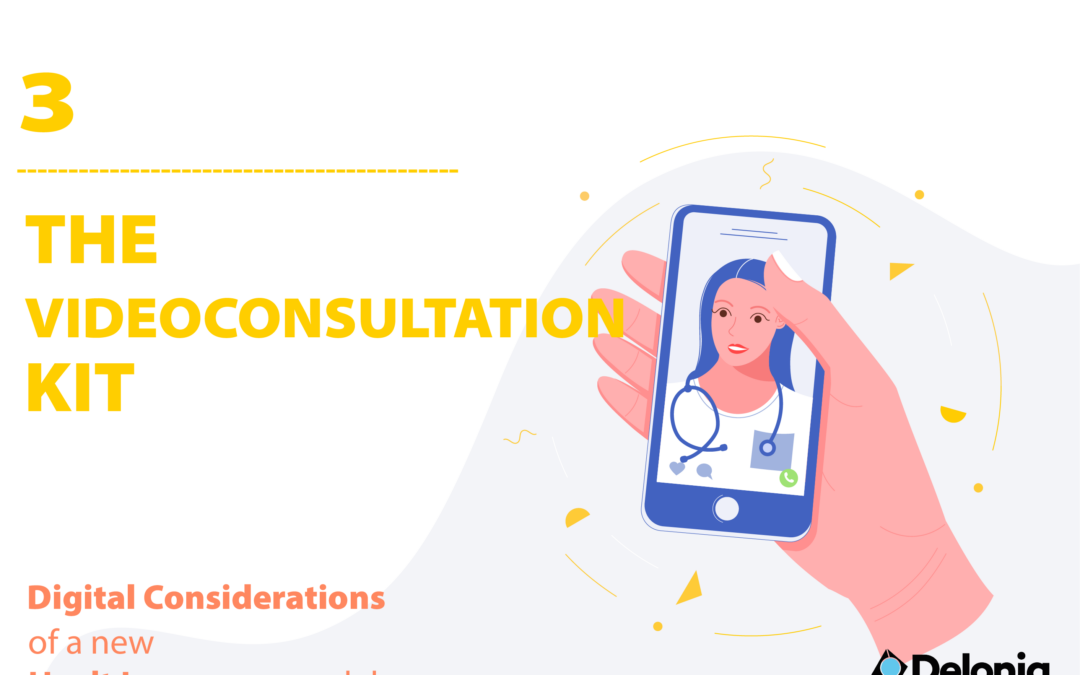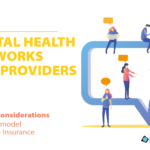1 Videoconsultation for healthcare professionals
In the land of digital mills, one of the best known, but not well implemented, is that of videoconsultation. To fight against this mill is to demand that this medical practice be carried out with guarantees and in compliance with a series of requirements . Only in this way will it be consolidated as an essential working tool of general use by all physicians and, practically, by all specialties.
Although hospitals, centers and insurance companies usually advertise this service, the truth is that the use of videoconsultation is not sufficiently widespread, which is not easy to understand if we think of all the advantages it provides. Its usefulness is very relevant and it should be a natural and native tool for doctors and healthcare professionals who have to interact with their patients. How much time, travel and costs could be saved.

If we think about the medical consultations that each one of us has had in recent times, how many of them have been resolved with a conversation or with a prescription for treatment or diagnostic test? In how many cases has an examination of the patient required the presence of both parties? As noted during the Covid19 pandemic, attendance may not be necessary. In fact, during this period, both in public and private medicine, remote medical consultations were promoted despite the lack of adequate support tools. There are many cases in which videoconsultation can replace face-to-face service:
- Many general practice or family practices.
- In the first specialist consultations.
- In the follow-up of post-surgical processes.
- To prescribe medications or tests.
- To clarify doubts about the evolution of the ailment or the treatment.
- To guide and reduce the risks of self-diagnosis and self-medication.
- To refer the patient to another health professional.
- To evaluate evidence and present results.
- To manage purely bureaucratic procedures.
- For periodic monitoring of chronic diseases.
What healthcare professional does not have to do this constantly in their regular practice?
Logically, the videoconsultation, as a working tool for the physician, must be easy and accessible to use and must be integrated into the healthcare operation as another, almost invisible, element. When a professional is going to see the next patient, it should be indifferent, from the clinical-operative point of view, whether this patient enters through the door or through the window, for example, of Windows. This versatility is especially exemplified and enhanced by access to videoconsultation from a mobile device, facilitating assistance from any place where the patient needs it and where the professional can attend him/her. What is really important is to have everything ready to start the consultation with all the guarantees and information that the professional needs to assist the patient in an optimal way.
Not everything on the market has the functionality and capabilities to truly achieve the status of a rigorous, effective medical practice with guaranteed information security and integrity.
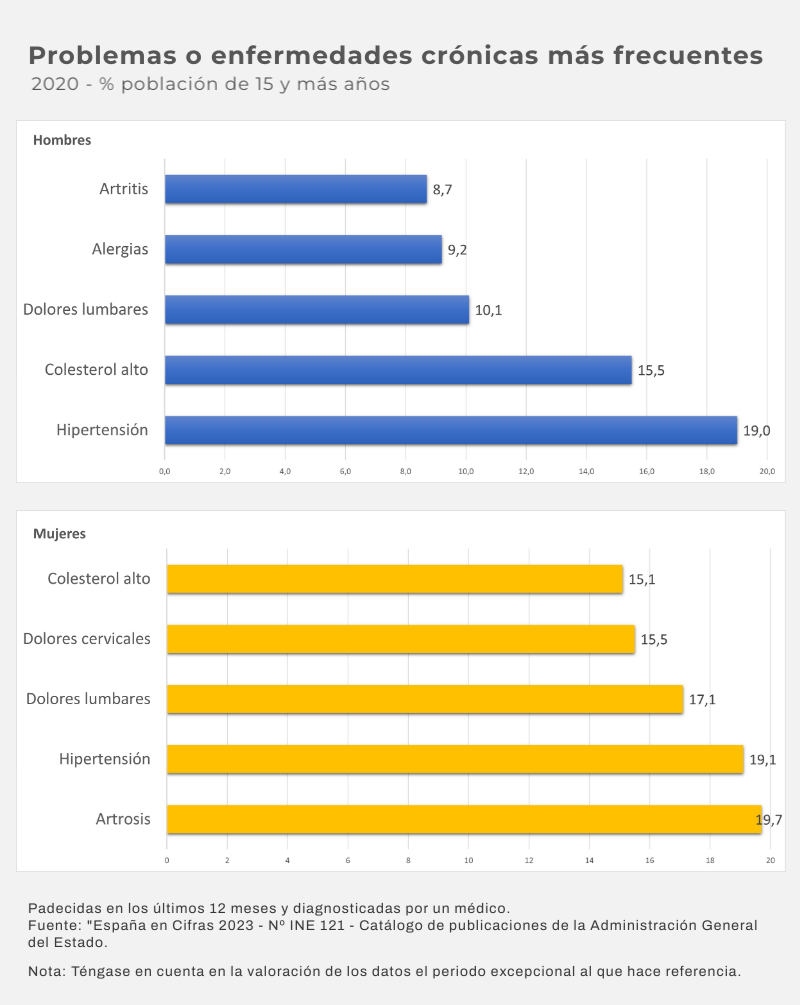
2 Videoconsultation requirements for health professionals
The videoconsultation is more than just a video call, whether it is Zoom, Facetime, Teams, or any other videostreaming tool on the market.
Not everything on the market has the functionality and capabilities to truly achieve the status of a rigorous, effective medical practice with guaranteed information security and integrity. For this to be true, the tool must include at least the following requirements and functionalities:
- Obviously, video, audio and text chat capabilities.
2. Ability to share documents (photos, images, text).
3. Access to patient health records both within the physician’s medical record (ERP) and to his or her Personal History (for example in the cloud, with the patient’s authorization) to consult previous documents from other professionals that apply to the case and to download them to incorporate them into the professional’s medical record (ERP).
4. Device integration (blood pressure monitor, glucometer, oximeter, etc.)
5. Ability to prescribe for:
- Medicines (electronic prescription)
- Analytics (Digital Analytics)
- Other tests
- Treatments/health plans
- Referrals
6. Recording of information in the Clinical History.
- Videoconsultation medical report (IMVC) with diagnosis, prescriptions and evaluation.
- Additional information associated with chat, shared documents.
- Record in the HC for the professional and send the IMVC to the patient’s personal history.
7. The tool will facilitate and maketotally transparent the flow of data generated in the video-consultation so that, when the professional presses the Print/Save button, the system will automatically execute the videoconsultation:
- Registration of information in HC of the center/professional (ERP).
- Sending the information to the patient’s personal folder (e.g. via web service in the cloud), registration of prescriptions in the Prescription Repositories (electronic prescription, digital analysis, etc.).
8. And although it is obvious, it cannot be stressed enough that all this must be carried out in a secure system that guarantees that patient information is protected and that the legal requirements on health data protection are met.
Videoconsultation is more than just a video call, whether it’s Zoom, Facetime, Teams, or any other video streaming tool on the market.
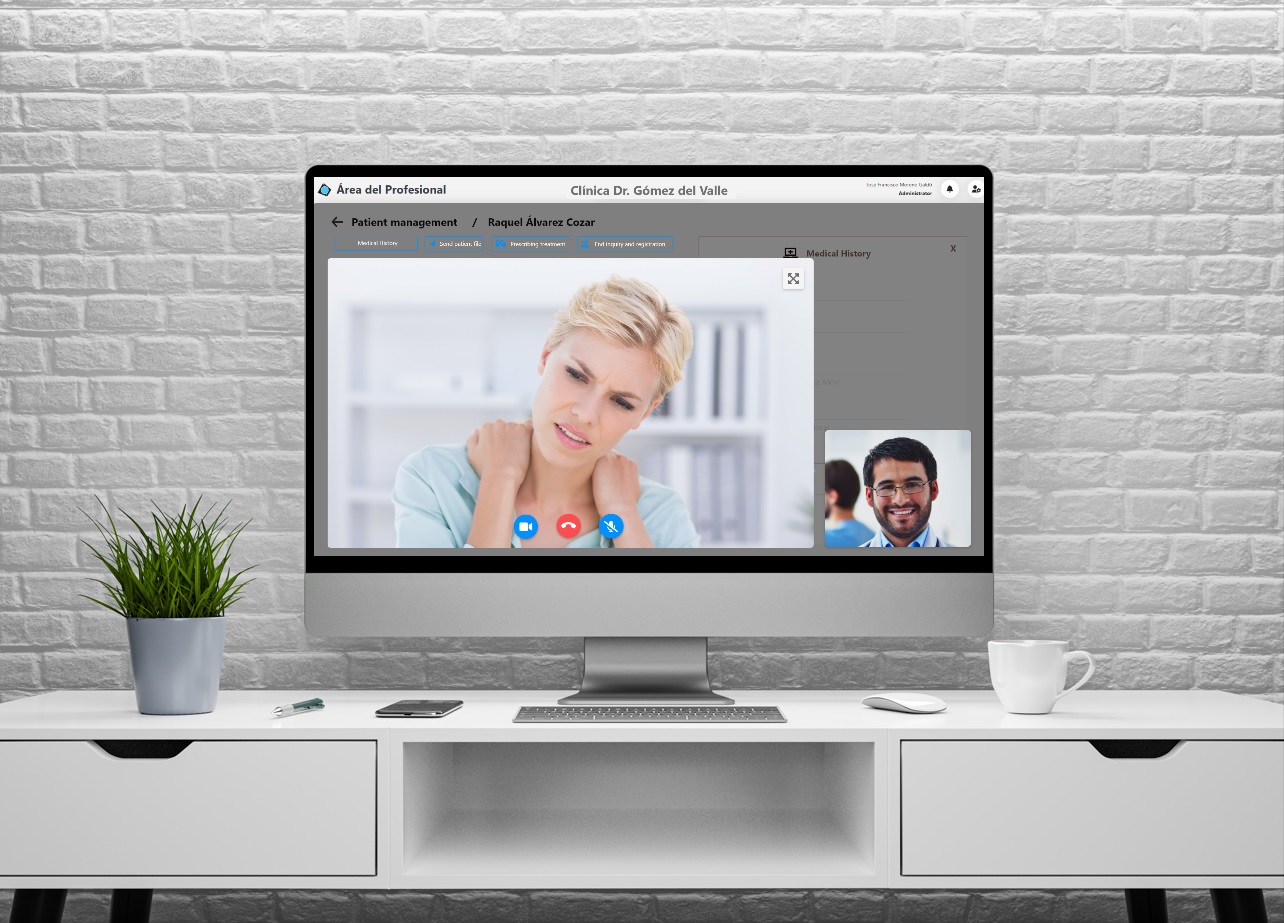
3 Daily operations: face-to-face consultation / video-consultation
As we pointed out at the beginning, this videoconsultation kit must necessarily be easy to use. To this end, the practitioner should make the following considerations:
- First, how to organize your schedule for this process, ie, treat the videoconsultation as another consultation, where patients are interspersed regardless of whether they are face-to-face or enter via the Internet. Other professionals may want to dedicate a certain time slot for videoconsultations, perhaps because they want to conduct them from another location or outside the hours of face-to-face consultations.
2. Clearly, an integrated agenda and online appointment scheduling seems paramount, although other alternatives can be considered.
3. The patient will be able to request an appointment, preferably online, where he/she will specify if he/she wants the consultation to be in person or by video, and if possible, specifying the reason for it.
4. Different types of videoconsultation can be considered depending on the reason, even assigning different times for the duration of the consultation, for example, a first consultation is not the same as a follow-up consultation.
5. The videoconsultation also has the advantage of being able to be carried out independently of the place of work, so that even when traveling, the professional can continue to attend to his patients.
6. The professional may want to guarantee that he/she will be paid for the videoconsultations and enable payment to the patient in those cases in which the service has a cost. This is possible by facilitating collection, ideally, at the time of booking or after the consultation if preferred by the healthcare professional. For this reason, it is important that the solution has integrated service billing with a certified online payment gateway.
7. We must not forget one last consideration that, although it seems futuristic, is no longer so. This system can incorporate aids and support for diagnostic imaging based on the integrability of videoconsultation with Artificial Intelligence systems, something that is already being done with “mobile health”, in the risk assessment of terminal insurance. The work of certain specialties, such as dermatology, can be “supported” by AI, and in fact there are already initiatives that provide a first imaging diagnosis based on these elements, with increasingly advanced studies in this regard.
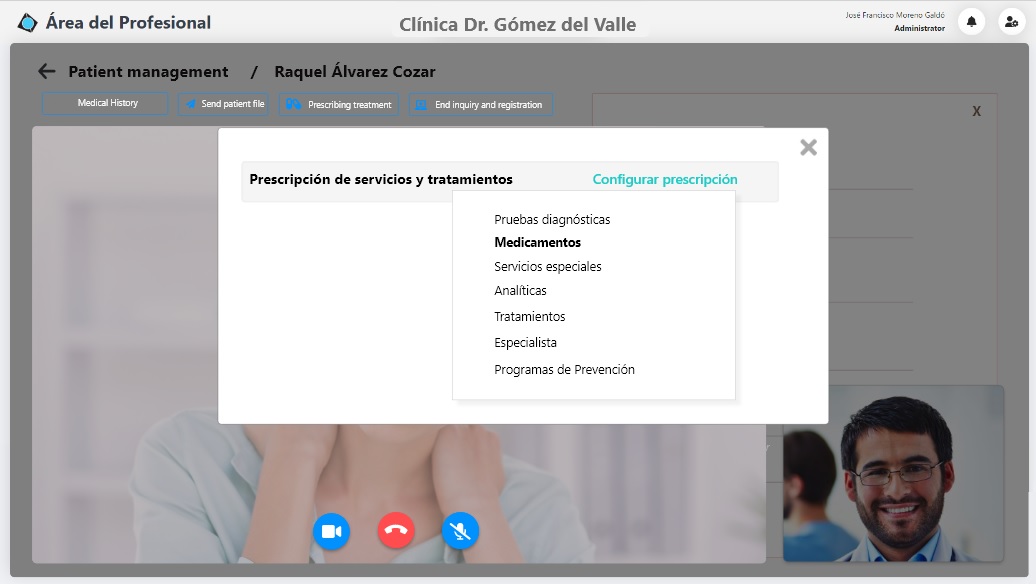
4 Table of Contents
It is evident that videoconsultation would make the professional’s work and the patient’s life much easier, while saving time and money by making the work more efficient.
It is true that there are not many tools on the market that have all the functionalities described above, especially the capabilities of:
- Digital prescribing, beyond the digital drug prescription.
- Integration of information through web services with ERP, web, Api’s.
However, there are solutions that are moving in this direction and will achieve these objectives as medical professionals incorporate these functionalities into their daily practice. For this reason, and in order to begin to move forward, it is necessary to study in detail how to integrate these elements in the daily operations and in the current systems of the professional’s practice. As on so many other occasions, this is the key, to integrate the new world within the existing one, to allow progress to be made on what has already been built.
Undoubtedly, in a few years no one will be able to understand medical practice without this type of tool, which will further strengthen the doctor-patient relationship.

